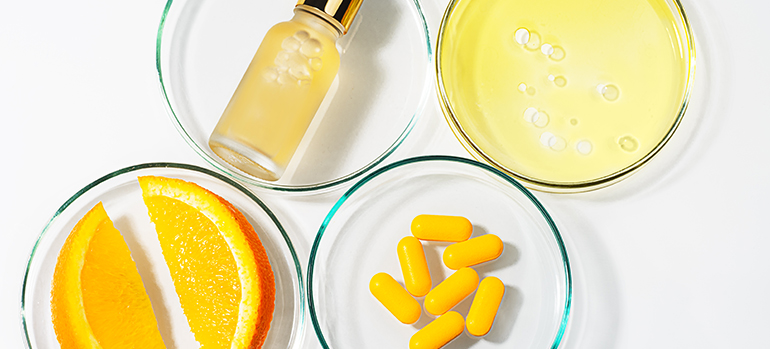Borderline Cosmetics in the EU

19 Sep 2023
Understanding a product's classification for regulatory compliance
The distinction between product classes can be unclear and/or ambiguous, sometimes requiring interpretation and input from competent authorities. A product can have similar characteristics with other products but may be governed by different regulatory frameworks. When products straddle between two or more regulatory definitions, the European Commission (EC) defines these products as "borderline." Understanding a product category is essential in assessing the regulatory requirements for a particular market.
Product evaluation and classification difficulties can arise even within the same legal framework. For example, under the EU Cosmetics Regulation 1223/2009, a mouthwash with "antibacterial" or "antiseptic" claims can be categorised as a cosmetics product, a biocidal product, or as a medicinal product. When a device, such as implants is involved, the product can be categorised as a medical device. In the case of these "borderline products," the decision on a product's classification is decided on a case-by-case basis by the EC.
What is a cosmetic product?
A cosmetic product, as defined by the EU Cosmetic Regulation, shall mean any substance or mixtureintended to be placed in contact with the various external parts of the human body or with the teeth and mucous membranes of the oral cavity for the purposes of cleaning them, perfuming them, changing their appearance, correcting body odours, and/or protecting them or keeping them in good condition. To classify a cosmetic product under the EU Cosmetic Regulation, thepurpose/function, formulation, and site of application must be clearly defined.
Functions:
Primary functions include altering of appearance (makeup), cleaning, beautifying, perfuming, protecting or correcting odours. A cosmetic product can also have a secondary function (e.g., biocidal/antimicrobial claims in oral hygiene products or deodorants where the primary purpose is of a cosmetic nature). In the evaluation of a cosmetic product function, the following considerations are important, these include, the manufacturer's intention, presentation, labeling, advertising, claims, mode of action, composition, and consumer perception. The indications for not allocating a clearly defined primary or main function to a cosmetic product, it stands the risk of being defined into a different product category.
Formulation:
There is a strong association between the composition of a cosmetic product and its function. Claims are made on the strength of specific ingredients used in the formulation of a cosmetic product (i.e., ingredients associated with a therapeutic use like fluoride in toothpaste). A cosmetic product formulation should not contain prohibited ingredients listed in Annex II of the EU Cosmetics Regulation; must comply with the guidelines on restricted substances in Annex III; and need to conform to the requirements relating to colorants (Annex IV), preservatives (Annex V), and ultraviolet (UV) filters (Annex VI).
Site of Application:
Cosmetic products are intended for application on external parts of the human body such as the epidermis, hair system, nails, lips and external genital organs, or the teeth and mucous organs of the oral cavity.
What is a biocidal product?
A biocidal product is a product with an active substance that is intended to destroy, deter, render harmless, prevent the action of, or otherwise exert a controlling effect on harmful or undesired organisms. A product's primary function, as determined by claims, is a major determinant in making a distinction between a cosmetic and a biocidal product. For example, bath soaps with antibacterial or antiseptic properties are classified as biocidal products, and sunscreens, with their UV repelling properties, are also considered biocidal products.
What is a medicinal product?
According to Directive 2001/83/EC, a medicinal product is any substance or mixture that has therapeutic or prophylactic properties in human beings. This includes substances administered with the aim of restoring, correcting, or modifying a physiological function by exerting a pharmacological, immunological, or metabolic action, or making a medical diagnosis. For example, shampoo is considered a cosmetic product since its intended use is to cleanse the hair; however, an anti-dandruff treatment is categorized as a drug because its intended use is to treat dandruff through a pharmacological action. Consequently, an antidandruff shampoo is both a cosmetic and a drug.
What is a medical device?
According to European Union Regulation (EU) 2017/745, a medical device refers to any instrument, apparatus, equipment, software, implant, reagent, material, or other article, used alone or in combination. In short, a medical device is intended for use in human beings in relation to a disease, injury or disability, an anatomical structure or function, a physiological or pathological process, as well as other special medical cases.
In addition, this regulation includes certain products for aesthetic purposes, such as tinted contact lenses, equipment emitting high intensity electromagnetic radiation such as lasers and intense pulsed light equipment used for skin resurfacing, tattoo removal, hair removal or other skin treatments.
Many medical devices are applied to superficial parts of the human body. The distinctive feature of a medical device is that the product is claimed to be used for a medical purpose or to belong to one of the aesthetic categories, which differentiates it from cosmetic products.
For example, a foot cream used to treat dry skin is a cosmetic product, but it will be classified as a medical device if there is a claim for healing damaged skin showing cracks or fissures.
Conclusion
Wrong product classification can negatively impact a business and can have serious safety ramifications for the end user if the intended product use or function is confused or misunderstood. Other direct consequences can include potential product recalls, redesign of product labels, re-application or re‑notification to the appropriate competent authorities, reformulation of the product, and/or application for variation in some product class within the same regulatory framework. There is also the burden of associated costs, loss of brand reputation, loss of time, etc.
It is imperative that manufacturers, suppliers, and distributors correctly classify their products from the onset; this will subject the product to the appropriate regulatory framework and meet relevant compliance requirements. In the case of uncertainty, the competent national authorities in the EU and UK Member States will decide on a case-by-case basis. Do you have questions about this topic, your obligations under the relevant regulatory framework, or a related topic? Contact our experts at Intertek Assuris—we're here to help!
For more information about our service offerings for the consumer healthcare, cosmetics, and toiletries industries, visit: https://www.intertek.com/assuris/cosmetics/.
References
Reference Manual Of The Working Group On Cosmetic Products (Sub-Group On Borderline Products) On The Scope Of Application Of The Cosmetics Regulation (Ec) No 1223/2009 (Art. 2(1)(A)) Version 5.2 (September 2020).

Joshua Ochola,
Associate Toxicologist,
Intertek Assuris
Dr. Joshua A Ochola is a EUROTOX/UKRT registered Toxicologist within the Liecester Intertek Assuris team. He currently executes projects for clients globally, his focus lies in the toxicological risk assessments of chemicals, biocides and cosmetics, ingredient safety evaluations and general toxicology. Prior to Intertek, Dr. Ochola worked in product/consumer safety and quality at COTY for 5 years, overseeing the downstream management and application of cosmetics, their product regulations quality and safety. He had his initial training as a Vet. Surgeon and earned a Master's degree in Env & Biochemical Toxicology from the Lancaster Environmental Centre (LEC) of Lancaster University. He is a member of the British Toxicological Society (BTS); Royal Society of Biologist (MRSB); and The Organization for Professionals in Regulatory Affairs (London, UK) (MTOPRA).